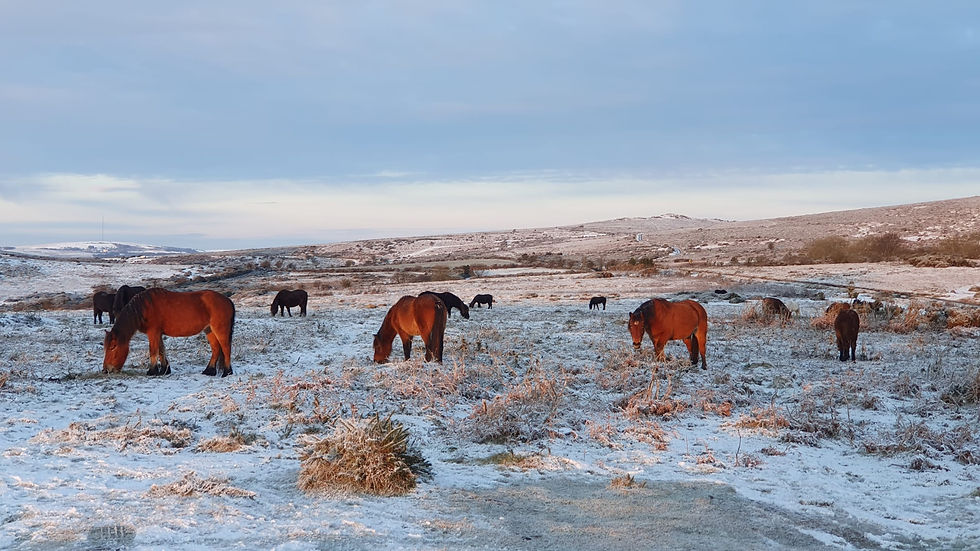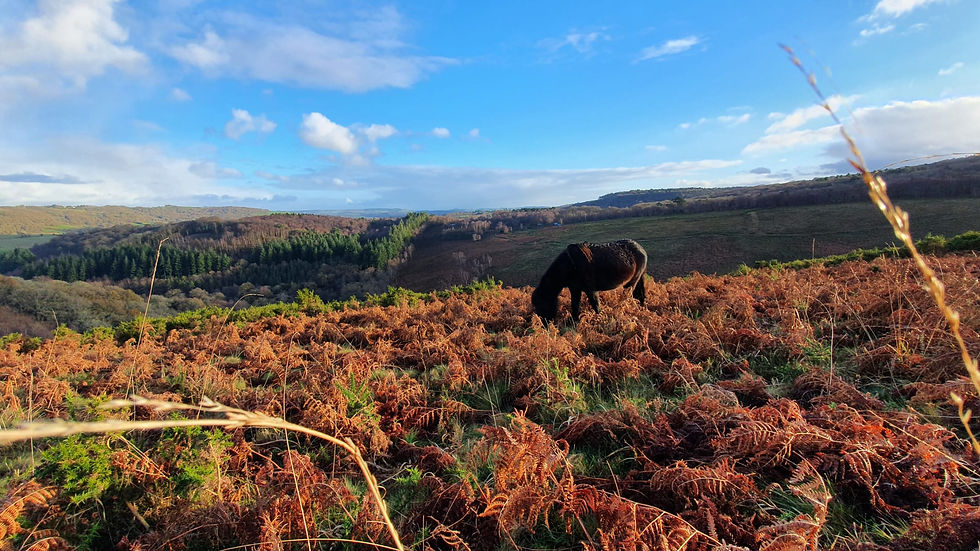Who Looks After Dartmoor?
- Jack Dicker
- Aug 19
- 2 min read

Dartmoor may feel like an untamed wilderness, but it is far from unmanaged. Behind the sweeping moorland views and ancient tors are organisations, farmers, businesses, and communities who work tirelessly to care for this unique landscape. The Dartmoor National Park Authority plays a central role, safeguarding wildlife, habitats, and cultural heritage while balancing the needs of visitors and local communities. They help maintain footpaths, manage access, and provide education on how to explore responsibly. Alongside them, commoners and farmers with historic grazing rights shape much of the moor through their livestock, which keeps habitats diverse and prevents areas from becoming overgrown.
Charities and volunteer groups also play a huge part in Dartmoor’s care. The Dartmoor Preservation Association campaigns to protect the moor from threats such as inappropriate development and erosion, while also running hands-on projects to conserve archaeological sites, peatlands, and rights of way. Meanwhile, Moor Trees focuses on rewilding, planting native trees, and restoring woodland habitats that were once widespread across Dartmoor’s valleys and slopes. Their work ensures that future generations can enjoy richer, more resilient landscapes, while also improving biodiversity and storing carbon.
Businesses across Dartmoor also contribute in many different ways. Outdoor activity providers such as climbing guides, pony trekking centres, and walking groups encourage people to engage with the moor safely and responsibly. Accommodation providers, cafés, and pubs often support conservation projects directly or help by promoting responsible tourism. Farming-related businesses, from local butchers to markets, rely on the moor’s traditional practices and help sustain the communities who manage the land. Forestry projects and stone masons also maintain parts of Dartmoor’s unique character while providing skilled employment that ties back to the moor’s heritage.
Local communities and visitors carry responsibility too. Every time someone chooses to pick up litter, stick to paths, or support conservation charities, they contribute to the protection of this shared space. Schools and families who take part in guided walks or volunteer days pass on a culture of respect and stewardship. Countless small community groups, history societies, and nature volunteers also work behind the scenes to care for specific sites, habitats, and stories. We owe thanks not only to the well-known organisations but also to the many unsung people and groups whose everyday choices and actions protect Dartmoor in ways we may never see.
The work of these groups is ongoing, and the challenges are real. Climate change, visitor pressure, and shifting land use all place strain on the moor. But with collaboration, Dartmoor continues to be one of Britain’s most cherished landscapes. By understanding who looks after it and why, we can all feel part of its story and take steps to support the people and organisations who keep it alive.
In reading about who looks after Dartmoor, it is worth exploring related themes too. For example, understanding the rules of Rights and Access on Dartmoor helps you see how land managers balance freedom with protection. You might also enjoy Wildlife Wonders on Dartmoor to discover the animals these groups help safeguard. Or explore Trees, Plants and Fungi of Dartmoor to connect the work of charities and volunteers with the habitats they care for.



Comments